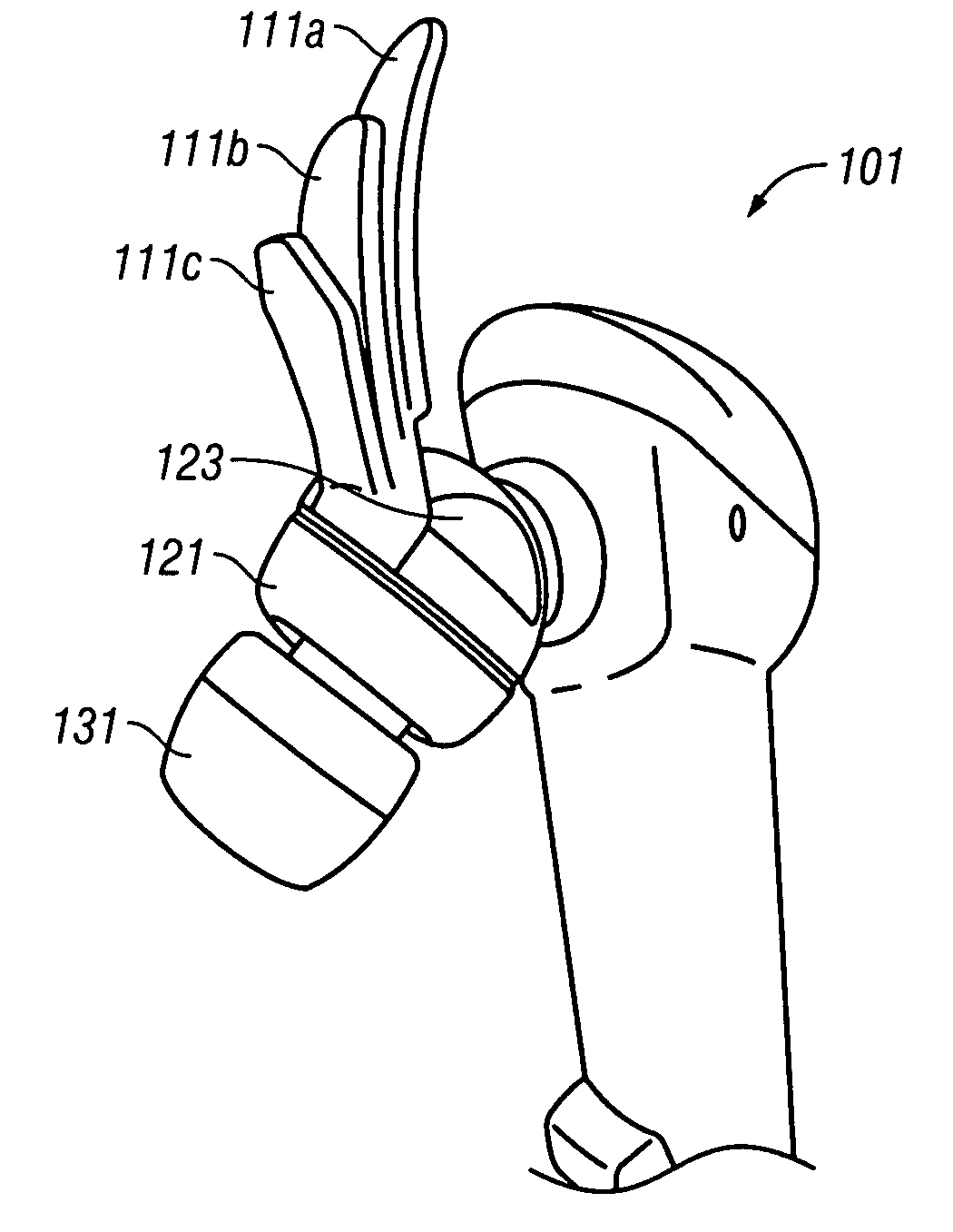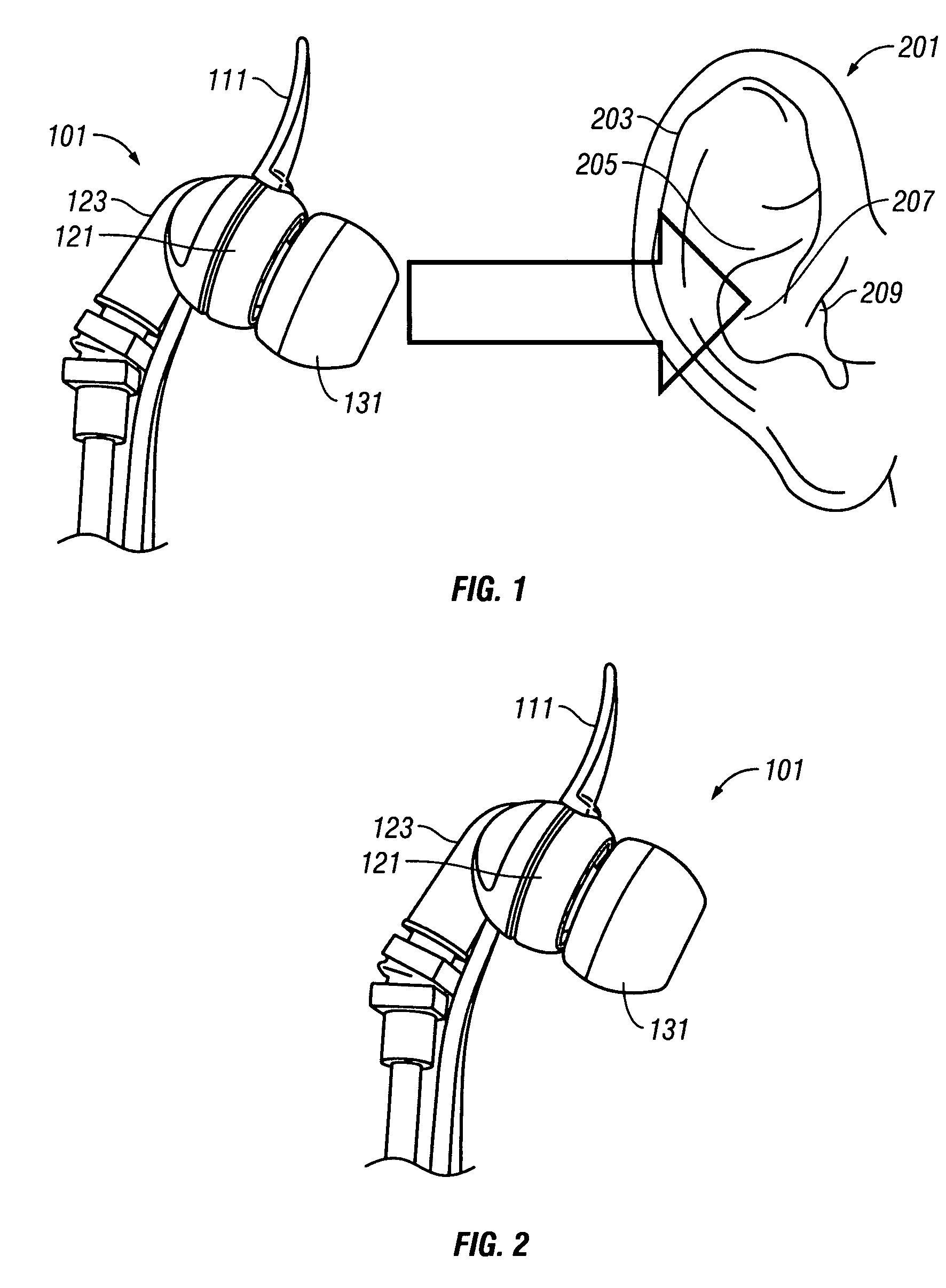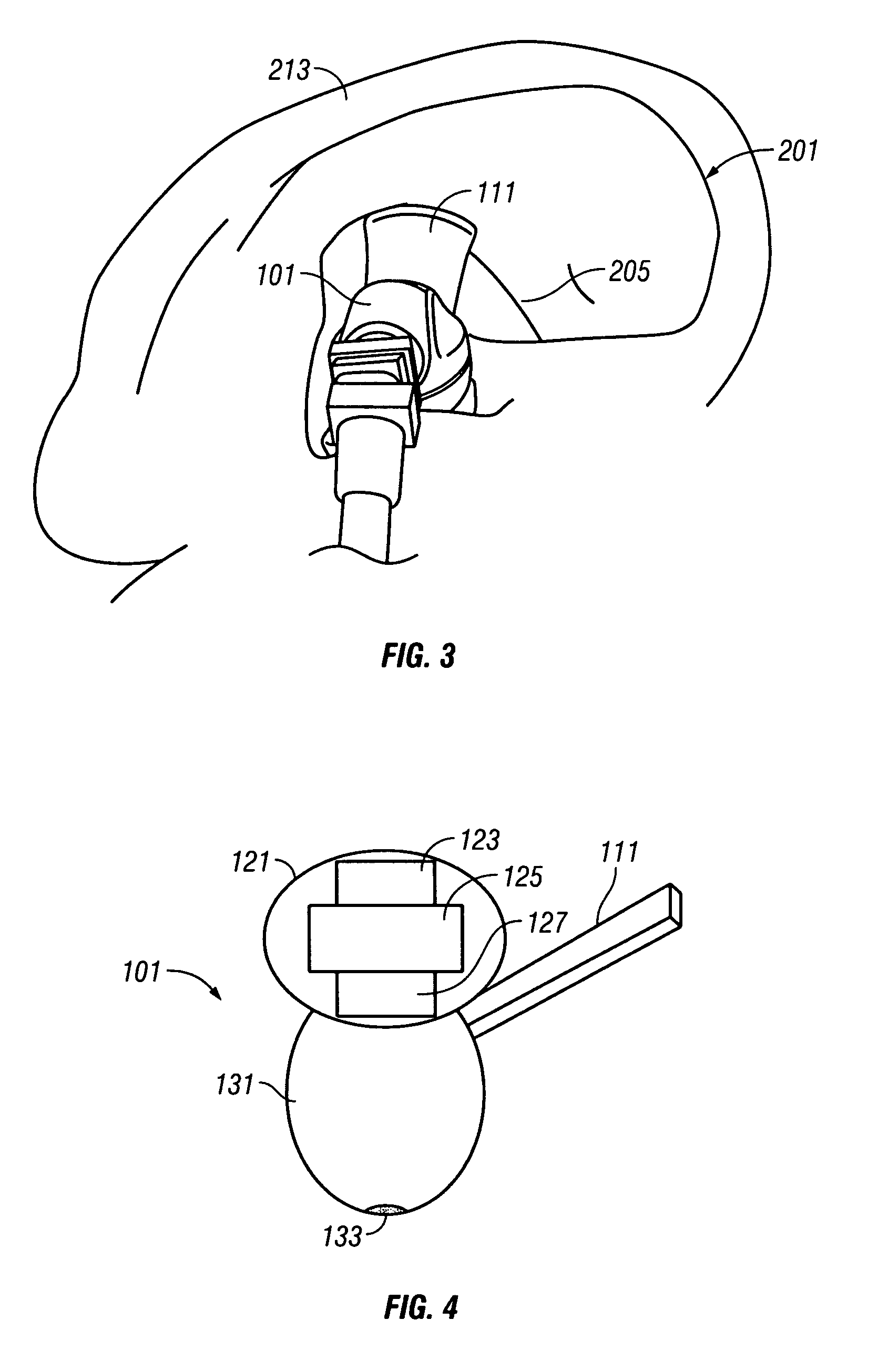Ear bud speaker earphone with retainer tab
a technology of retainer tab and earphone, which is applied in the direction of earpiece/earphone attachment, deaf-aid sets, electrical devices, etc., can solve the problems of deafness, poor fit, and insufficient transmission, so as to enhance the ability to maintain a seal with the ear canal, enhance the effect of friction and great stability
- Summary
- Abstract
- Description
- Claims
- Application Information
AI Technical Summary
Benefits of technology
Problems solved by technology
Method used
Image
Examples
Embodiment Construction
Structure of the Ear Bud Speaker and Associated Tab
[0025]An ear bud earphone of the invention, positioned for insertion is illustrated in FIG. 1. The earphone 101 is shown with an outer portion 123, which may be a microphone or sound input or a contact for wires or acoustic tubes, a central body portion 121, and an ear canal main body (or ear tip) 131. The ear canal main body 131 of the earphone 101 has flexibility to conform to the ear anatomy. The ear (pinna) 201 has a helix 203, an anti-helix 205, a concha 207 including the anatomical elements of a cymba and a cavum, and the ear canal. The ear canal main body 131 is inserted into the concha 207, with the tab 111 resting under the anti-helix 205.
[0026]One embodiment of the ear bud earphone of the invention is illustrated in FIG. 2. The earphone 101 as shown in FIG. 2 has an outer portion 123, which may be a microphone or sound input or, alternatively, a contact or input for wires or acoustic tubes, a central body portion 121, and ...
PUM
 Login to View More
Login to View More Abstract
Description
Claims
Application Information
 Login to View More
Login to View More - R&D
- Intellectual Property
- Life Sciences
- Materials
- Tech Scout
- Unparalleled Data Quality
- Higher Quality Content
- 60% Fewer Hallucinations
Browse by: Latest US Patents, China's latest patents, Technical Efficacy Thesaurus, Application Domain, Technology Topic, Popular Technical Reports.
© 2025 PatSnap. All rights reserved.Legal|Privacy policy|Modern Slavery Act Transparency Statement|Sitemap|About US| Contact US: help@patsnap.com



